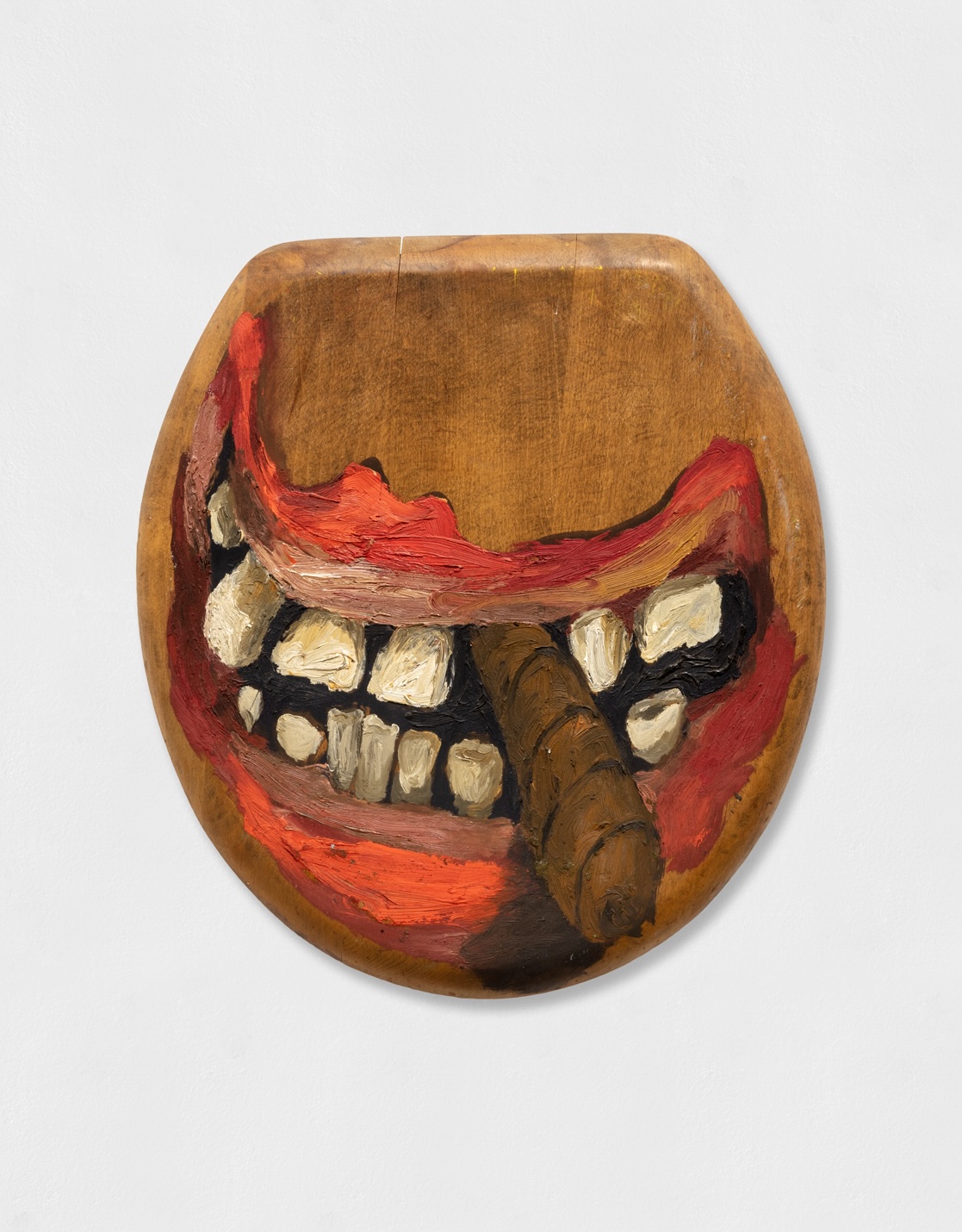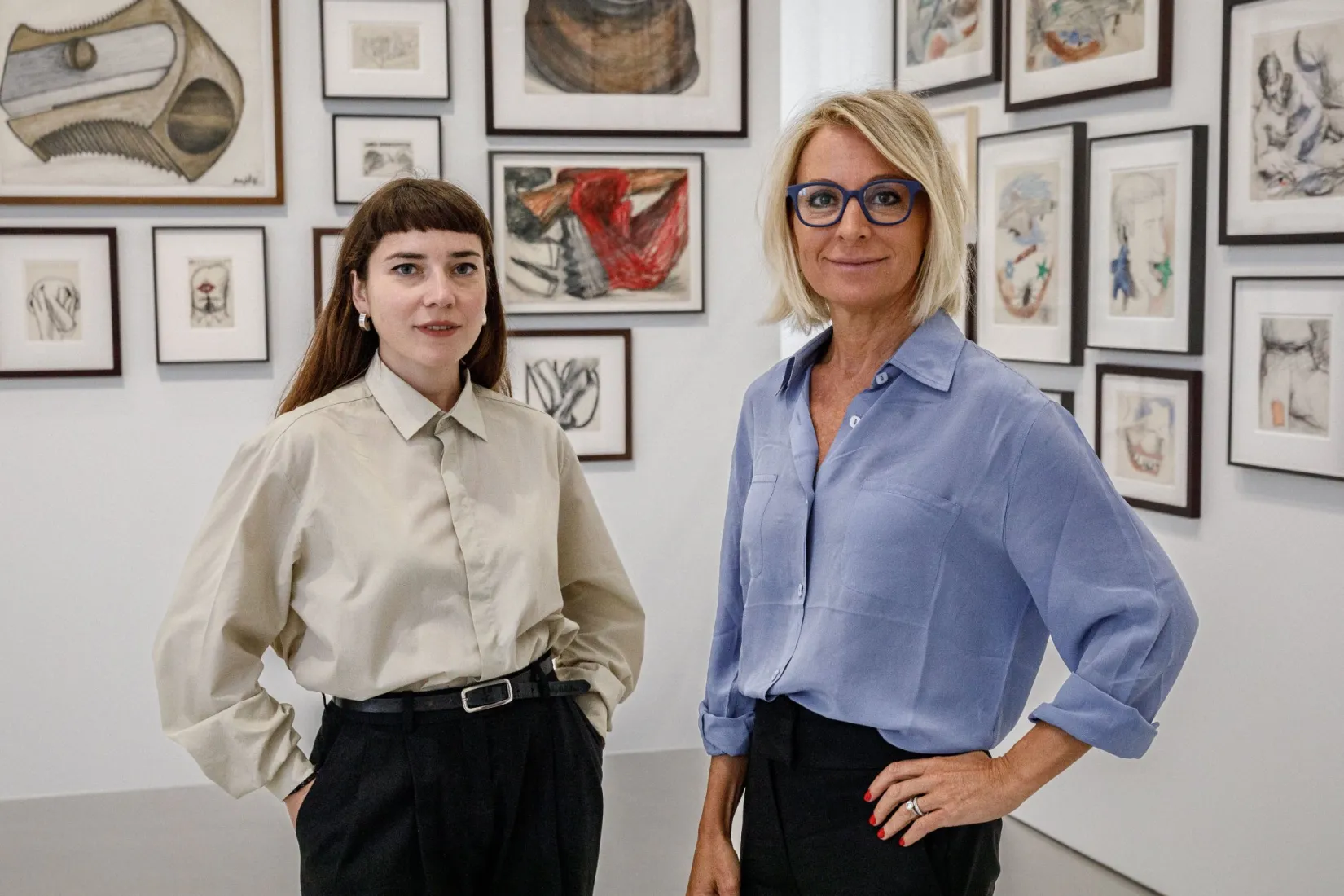Lee Lozano

From September 2023 to January 2024, the Collection Pinault presented Strike, an exhibition of Lee Lozano's work at the Bourse de Commerce, as part of the ‘American Mythologies’ season: a series of solo exhibitions - Mike Kelley, Mira Schor and Serpas - marked by counter-cultures and a refusal to follow the rules of the game.
After being shown at the Pinacoteca Agnelli in Turin, the exhibition Strike, devoted to the artist Lee Lozano (1930–99) is coming to the Bourse de Commerce in Paris, featuring thirteen emblematic works from the Pinault Collection. Conceived by Sarah Cosulich and Lucrezia Calabrò Visconti, in collaboration with the Pinault Collection, it will show the work of this artist for the first time ever at a French institution as part of the season Mythologies américaines, a series of solo exhibitions also featuring Mike Kelley, Mira Schor, and Ser Serpas marked by countercultures and a refusal to follow the rules.
The exhibition Strike features a vast selection of works made by Lee Lozano that cover all of her brief but extremely prolific career, which extended from 1960 to 1972. After studying painting in Chicago, Lozano moved to New York at the beginning of her career and quickly gained notoriety within the art scene in the 1960s for her protean and highly original work.
Lozano faced an art world dominated by pop art, minimalism, and conceptual art, especially with regard to painting. She participated in the artistic and social environment of the time, all the while preserving a radical attitude and resisting any form of classification or systemic power.
The exhibition title offers a meditation on the polysemy of the word “strike”. As a verb, “to strike” expresses a violent action, an uncontrollable explosion of energy produced either by the human body, a tool, or a weapon. As a noun, “strike” evokes the radical refusal to work, in reference to Lozano’s famous piece General Strike Piece (1969), which signalled her first attempt to pull away from the art world. Lozano’s provocative, amusing, and just as lethal “strikes” were addressed as much at the art world as the social, emotional, and political dimensions of her own existence.
In Gallery 2 at the Bourse de Commerce, the exhibition reveals the coherent trajectory in Lozano’s various bodies of work; it is devoted to a complete set of drawings and canvasses dating to the beginning of her career in which her disenchanted yet gripping manner of representing the human body is expressed through its sensual and violent relationship with its surrounding environment. Her characteristic visual style over the years incorporated objects, weapons, threatening articles, and erotic motifs to provide a sarcastic commentary on the male-dominated world within which her work was being made.
Surrealist touches, sexual imagery, and explicit slogans evoking advertising are overlaid in her drawings, thereby accentuating the active role that language plays in her work. In or around 1963, Lozano began to make her series Tools, in which hammers, screwdrivers, and machines formed the subjects of extremely powerful, large-format oil paintings on canvas. The exhibition also includes the series Airplanes, in which flying objects interact with human orifices. In 1965, Lozano turned to abstraction with a series of monumental paintings to which one of the gallery rooms is devoted, along with a rare selection of preparatory drawings. The Language Pieces, works based on texts from the late 1960s-early 1970s, round out the exhibition by showing her evolution towards an entirely conceptual practice. This phase of her work describes the nervousness that Lozano felt towards any form of institutional power, a trend that culminated in her decision to abandon the art world once and for all in 1972.
Marked by an extreme radicalism, Lee Lozano’s work represents a biting critique of discrimination in the art world (which is essentially dominated by men and market-driven). Lee Lozano acted according to a logic of refusal, which came to form part of her identity, as she explored the blurry boundaries between art and life. The exhibition Strike has been adapted to the curved space of the Bourse de Commerce by Sarah Cosulich and Lucrezia Calabrò Visconti.
Biography of the artist
An artist included in the Pinault Collection, Lee Lozano (United States, 1930–1999) was an American painter and a visual and conceptual artist, a key, pioneering figure in the New York art scene of the 1960s and early 1970s.
Born Lenore Knaster on 5 November 1930 in Newark, New Jersey, she received her Bachelor of Arts from the University of Chicago in 1951, the city in which she met and married the architect Adrian Lozano. In 1960, she earned her Bachelor of Fine Arts degree from The Art Institute of Chicago, and she also obtained a divorce. She moved to New York in 1961, where she spent the next decade as an active figure in the art scene, and where she became friends with Carl Andre, Richard Bellamy, Sol Lewitt, Lucy Lippard, and Dan Graham, among others. During this period, her figurative and abstract paintings were exhibited in group shows at the Green Gallery, the Bianchini Gallery in Cincinnati, the Galerie Ricke in Cologne, and the Paula Cooper Gallery, where she first exhibited her text-based works. In 1970, she was the subject of a one-woman show at the Whitney Museum of American Art in New York, followed by exhibitions in Germany, Nova Scotia, and the Lisson Gallery in London. In 1971, she decided to forsake the name Lee Lozano for “Lee Free”, which she would eventually shorten to “E”. After Dropout Piece, her 1972 gesture, she decided to leave the art scene, disappearing from view for ten years, in which time she had no contact with any of her peers. “E” resurfaced in 1982 in the city where her parents lived in Texas, and where she lived
until her death. During this period, even though she did not produce any new work, she considered pursuing Dropout Piece through her own life. E. died on
Exhibition held in collaboration with the Pinacoteca Agnelli, Turin. Curated by Sarah Cosulich and Lucrezia Calabrò Visconti.
